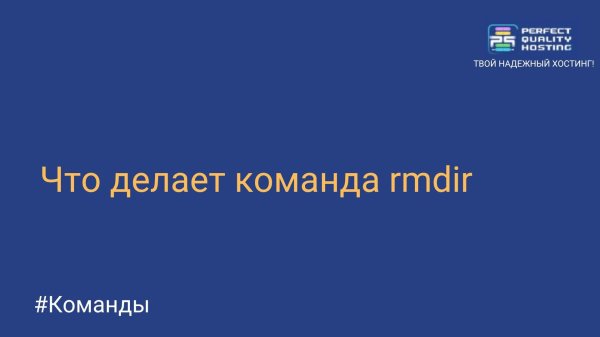What is the rm command for?
- Main
- Knowledge base
- What is the rm command for?
The rm command in Linux is used to delete files or directories. It allows you to delete both empty and non-empty directories, and will not give an error message if the file or directory being deleted contains subdirectories or files.
Examples of using the command
Examples of using the rm command:`
where `file.txt ` is the name of the file to be deleted.``rm -r directory`` where `directory` is the name of the directory to be deleted along with its contents.
The rm command options provide additional options for deleting files and directories. Some of them include:- `-f` or `--force`: allows you to delete files or directories without requesting confirmation (be careful when using this option, as deleted files cannot be restored).- `-r` or `-R` or `--recursive`: used to delete directories with all its contents recursively (including nested subdirectories and files).
When using this option, be careful not to delete something unnecessary or valuable.- `--preserve-root': a standard parameter of the rm command that prevents the root (/) directory from being deleted.Note that the rm command cannot be undone, and deleted files or directories cannot be restored. Therefore, be especially careful when using this command and make sure that the deleted files and directories are really no longer needed.
How to install the command
To use the rm command, there is no need to install it, since it is already present on most Linux distributions. It is part of the basic utilities of the system. If for some reason the rm command is not available on your system, it may be due to the non-presence of the "coreutils" package, in which it is contained by default. To install the coreutils package and thus access the rm command, you must follow these steps:
- Open a terminal or console.
- Enter the following command corresponding to your distribution: For Debian-based distributions (Ubuntu, Linux Mint, etc.): sudo apt-get
- install coreutils. For distributions based on Red Hat (Fedora, CentOS, etc.): sudo dnf install coreutils or sudo yum install coreutils.
- For distributions based on Arch Linux (Manjaro, etc.): sudo pacman -S coreutils
- Enter the superuser password (root) or grant administrator rights if required.
After the installation of the coreutils package is complete, the rm command should become available and ready for use on your system.
Apply the discount by inserting the promo code in the special field at checkout:



































